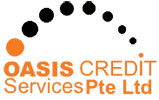Borrowing money always comes with a price tag, but do you know how much that price is? While interest rates may seem like the obvious cost, loans often come with various hidden fees that can significantly inflate your repayment amount.
This guide will walk you through the key factors that contribute to the total cost of a loan, helping you go beyond the advertised interest rate and uncover any hidden charges. By the end of this article, you’ll have the tools to calculate the actual cost of a loan and make informed financial decisions.
Demystifying Interest Rates
Fixed vs. Variable Interest Rates
The interest rate is often the first thing people consider when considering a loan. But it’s essential to understand that not all interest rates are created equal. Loans typically fall into two categories when it comes to interest rates:
- Fixed Interest Rates
Fixed interest rates remain consistent throughout the loan’s life. This means your monthly payments won’t fluctuate, allowing you to budget more effectively.
- Variable Interest Rates
Variable rates, on the other hand, can change based on market conditions. While these may start lower than fixed rates, they can increase over time, making them riskier if unprepared for potential payment hikes.
The Impact of Compounding Interest
Compounding interest is another factor that can influence the actual cost of your loan. Interest is calculated on the original loan amount and the accumulated interest.
Here’s an example to illustrate this concept:
- Loan Principal: $10,000
- Interest Rate: 10% annually
- After the first year, you owe $11,000.
- By the second year, interest is now charged $11,000, not $10,000.
Understanding how often interest compounds (annually, monthly, or daily) is critical in determining the total you’ll owe over time.
Unveiling Hidden Fees
While interest rates are the headline cost, many loans come with additional fees that can add up quickly.
Origination Fees
An origination fee is charged for processing your loan application. Typically ranging from 1% to 5% of the total loan amount, this fee is often deducted from the loan disbursement. For example, if you borrow $10,000 and pay a 3% origination fee, you’ll receive $9,700 but still owe $10,000 plus interest.
Late Payment Penalties
If you miss a payment, you may face hefty late fees. These can range from a small flat fee to a percentage of the payment amount. Late fees not only increase your costs but can also negatively impact your credit score.
Prepayment Penalties
Planning to pay off your loan early? Beware of prepayment penalties, which some lenders charge to compensate for the interest they lose out on when you repay ahead of schedule.
Annual Fees and Service Charges
Some lenders also charge an annual or maintenance fee to keep your loan account active. Over the life of a loan, these small recurring charges can add up to a substantial amount.
Calculating the Total Cost
You need to account for both the interest rate and the hidden fees to paint a complete picture of your loan’s cost.
Using an APR (Annual Percentage Rate)
One way to estimate the total cost is by examining the APR (Annual Percentage Rate). Unlike the nominal interest rate, the APR includes the interest and most additional fees. For example:
- Loan Amount: $10,000
- Interest Rate: 8%
- Origination Fee: 3% ($300)
- The APR reflects these combined costs, giving you a clearer picture of what the loan truly costs annually.
Creating Your Loan Cost Calculator
You can manually calculate the total cost of a loan by following these steps:
- Add Up the Fees
Sum all the initial fees, such as origination and prepayment penalties.
- Calculate Total Interest
Use an online calculator or formula to estimate the total interest paid over the life of the loan.
- Combine Fees and Interest
Add the fees and interest together to get the true cost of the loan.
This step-by-step approach ensures that no cost is overlooked.
When is Taking Out a Loan the Right Choice?
Not all debt is bad debt. Sometimes, taking out a loan can be a strategic move that helps you reach your goals.
Expanding Your Business
If you’re a business owner, securing a loan to purchase equipment, hire staff, or expand operations can often lead to increased revenues later on.
Managing Cash Flow
Loans can also bridge gaps in cash flow, especially during slow seasons or unexpected downturns. Short-term financing can keep your business running smoothly.
Investing in Growth Opportunities
Whether furthering your education, launching a new product, or renovating your home, taking on a loan to fund growth opportunities can yield long-term benefits when managed wisely.
Make Smart Loan Decisions
Understanding the true cost of a loan goes beyond comparing interest rates. Hidden fees, compounding interest, and additional charges can significantly impact your pay.
By demystifying these costs, you can make more informed decisions about when, where, and how to borrow. Compare lenders, read terms carefully, and use tools like APR and cost calculators to ensure there are no surprises ahead.
Need help breaking down the numbers? Try using a loan calculator to get started.

